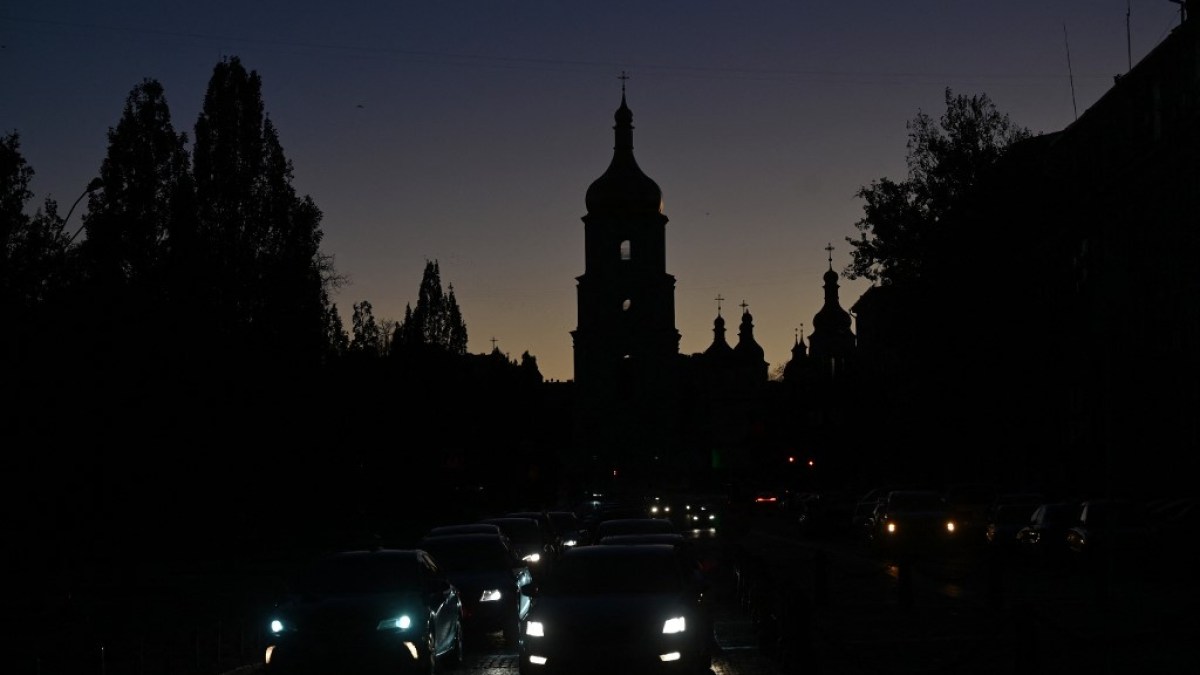How Kyiv copes with blackouts | Russia-Ukraine war News
Kyiv, Ukraine – It gets so dark so early, Lyubov Fedorchenko says, that it can feel like living in a bygone era.
“I never understood my grandma who said that they would go to sleep after sunset,” the owner of a four-bedroom house in Ukraine’s capital, Kyiv, told Al Jazeera.
“But these days, we live like hamsters. When it gets dark, we go to bed.”
Fedorchenko’s untimely slumbers are the result of massive power cuts since October 10, when Russian bombs began raining down on cities across Ukraine in the latest phase of the months-long war.
The barrage of missile and drone attacks has targeted electricity transmission and water-pumping stations, heating facilities and other key infrastructure, damaging the country’s power grid and forcing authorities to impose restrictions on energy usage.
Millions of Ukrainians depend on the damaged or destroyed infrastructure during winter, when temperatures drop well below zero – and the lack of central heating may have catastrophic consequences.
“As winter approaches, Russian leaders deliberately deprive people of basic things: water, electricity, heat,” Prosecutor General Andriy Kostin said earlier this week. “This is terrorism and war crimes.”
The Kremlin denies it targets civilian sites, but does not rule out more attacks.
“That’s not all we could have done,” Russian President Vladimir Putin said on October 31.
‘It’s pitch-black’
In western Kyiv, Polina Shevchenko shares a two-bedroom apartment with her boyfriend Evhen Denisenko and Freeda, their nine-month-old mittelschnauzer.
The regular but unscheduled and hours-long blackouts have upended their lives.
Dish-washing and laundry need to be timed to the hours when the power is on.

After each walk with Freeda, the dog’s paws need a wash – but the water supply depends on electricity, so Shevchenko uses jars and bottles to pour the water.
At night, the couple would typically watch one of the many films they have downloaded or turn to their drastically expanded collection of board games.
Shevchenko understands their problems pale in comparison with what millions of other Ukrainians have gone through since Russia’s invasion began in late February.
“There are those who feel much worse,” she said. “Those who have no electricity at all, no water, or are on the front line.”
Denisenko, a 30-year-old IT expert who works from home, had to fork out $1,000 for a power bank – a hard-to-find item in today’s war-hit Ukraine – that can be hooked up to his laptop and the three computer screens he uses for his job.
Shevchenko, meanwhile, commutes to central Kyiv for her work as a tutor. Her evening walk to the metro station can be full of existential horrors, she lamented.
“It’s pitch-black and the [air raid] siren is wailing,” she said.
Without electricity and street lights, apartment buildings and shopping centres loom post-apocalyptically black, and only tiny halos of mobile phone flashlights denote pedestrians cautiously walking down potholed roads.
Drivers can barely see those without flashlights or wearing black, while turned-off traffic lights create chaos.
“You pass through a crossing with a prayer,” said taxi driver Oleksander Glushchenko.
New ways to get power
In some cases, however, the blackouts trigger inventiveness.
Diana Maslennikova said her husband had found a way to connect their car’s battery to the power grid of their 15th-floor apartment in central Kyiv. The voltage is not enough to fuel the fridge or the washing machine, but energy-saving light bulbs are on.
“Now, he spreads this beautiful knowledge on,” said Maslennikova, a manual therapist who receives her patients at home.
Meanwhile, when a woman got stuck in the powerless lift of the apartment building, neighbours promptly let her out – and came up with emergency boxes in each of the building’s three elevators. They contain an empty jar for emergency relief; candles and flashlights; snacks and a ground pad to sit on.
The building’s height means Maslennikova often witnesses death and destruction as missiles and drones land in surrounding areas.
On October 17, she saw what Ukrainian officials say are Iranian-made kamikaze drones hit a five-storey building next to a railway station where her son’s friend lives.
The friend was out – but his grandmother was among the five people killed in the attack, she said.
With each blackout, there is a new problem for Maslennikova – from patients opting not to climb up the stairs to her apartment to the cooking of meals being abruptly ruined.
Still, she joked, there was one family member who benefitted from the new lifestyle: their cat, who these days is petted way more often than before.
“It is surprised by so much attention,” Maslennikova said.





Pingback: 무료 영화 다시보기
Pingback: 웹툰 미리보기
Pingback: visit this site
Pingback: เน็ต ais รายวัน
Pingback: go to website